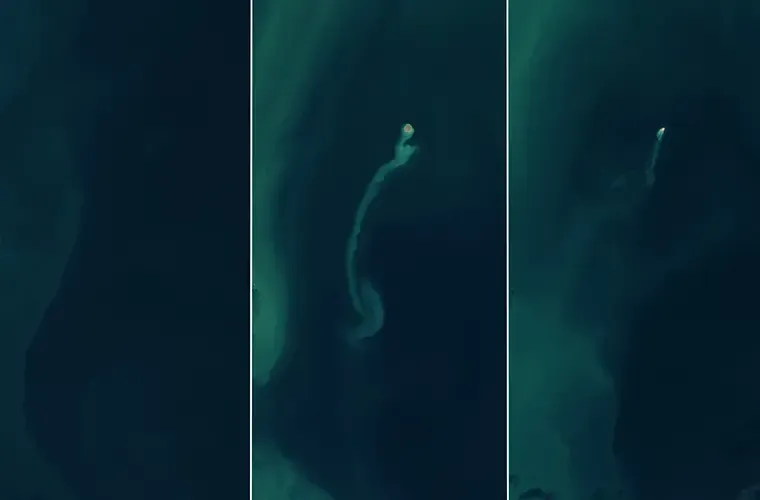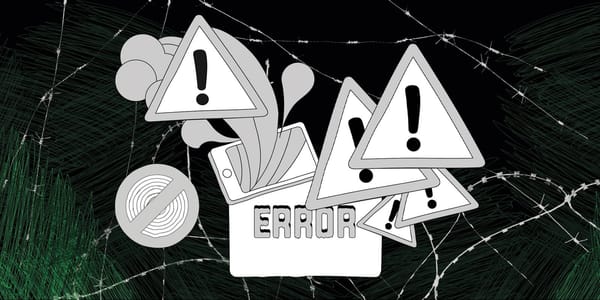NASA Captures Mysterious ‘Ghost Island’ Appearing and Disappearing in the Caspian Sea

NASA satellites have captured an amazing event in the Caspian Sea—an island appeared suddenly and then vanished just as quickly. This "ghost island" gives scientists a rare look at how mud volcanoes can change the landscape in a short time.
In early 2023, about 15 miles off Azerbaijan’s eastern coast, the Kumani Bank mud volcano, also called Chigil-Deniz, erupted. This eruption created a new island, which fascinated scientists and showed just how unpredictable mud volcanoes can be.
Images from NASA’s Landsat 8 and 9 satellites, which use advanced imaging tools, documented the island’s short life. In November 2022, there was no island in the area. But by February 14, 2023, an island about 1,300 feet across had formed, along with a plume of mud and sediment.
Mud volcanoes form when mud, water, and gases from deep underground are forced to the surface. Unlike regular volcanoes, they don’t produce lava. Instead, the materials they expel can build up to create temporary islands. These islands don’t last long because wind and water quickly erode the loose sediments.
The island near Kumani Bank is a perfect example. By late 2024, satellite images showed the island had almost completely disappeared, leaving behind only the memory of its brief existence.
Azerbaijan is famous for having one of the world’s highest concentrations of mud volcanoes, with over 300 found on land and offshore in the Caspian Sea. This is because the region sits where the Arabian and Eurasian tectonic plates meet. The collision of these plates creates underground pressure, which leads to the formation of mud volcanoes.
The Kumani Bank mud volcano is known for creating temporary islands. Its first recorded eruption in May 1861 formed a small island just 285 feet wide and 11.5 feet above the water. However, the island eroded away by early 1862. The most powerful eruption, in 1950, created a larger island—2,300 feet wide and 20 feet tall.
Mud volcano eruptions can also be dangerous. In rare cases, these eruptions catch fire, creating dramatic flames. Scientists aren’t entirely sure how this happens, but one popular theory is that the flammable gases released during an eruption, like methane and hydrogen sulfide, ignite when rocks collide and create sparks under high pressure.
These fiery events are rare but spectacular. Flames from mud volcanoes can sometimes be seen from miles away, showing the raw power and unpredictability of nature. This makes mud volcanoes not only fascinating but also a potential hazard in regions like Azerbaijan.
Disappearing islands are not unique to the Caspian Sea. In 2013, a 7.7-magnitude earthquake near Pakistan triggered a mud volcano eruption that formed a “ghost island” near Gwadar. This island was 65 feet tall, 295 feet wide, and 131 feet long. By 2016, however, the ocean had washed it away, making it vanish as quickly as it appeared.
These ghost islands can impact local ecosystems and human activities. While they exist, they may provide temporary homes for plants and animals. However, their sudden appearance can create dangers for ships and boats. When they erode, they can also disrupt marine environments by moving sediment to new areas.
Satellites play a big role in studying these short-lived events. Advanced tools like NASA’s Landsat satellites allow scientists to monitor changes on Earth’s surface in real time. This technology helps researchers document fleeting phenomena like disappearing islands that might otherwise go unnoticed.
The study of mud volcanoes isn’t just limited to Earth. Scientists think similar processes might occur on other planets. For example, some features on Mars may have formed through mud volcanoes, suggesting this geological process could be common across the solar system.
The recent case of the ghost island in the Caspian Sea highlights how important satellite monitoring is for understanding Earth’s changing systems. As technology improves, scientists will gain even better insights into the geological processes shaping our planet and beyond.
Thanks for visiting Our Secret House. Create your free account or donate by signing up to never miss any news!





